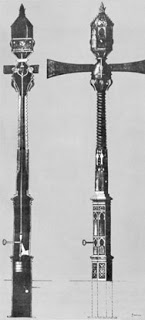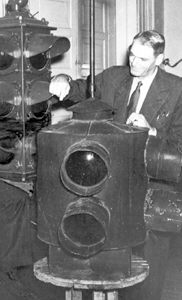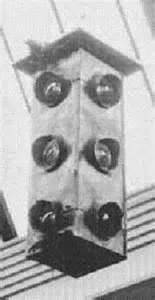The Evolution of the Traffic Light
The first traffic lights came into being before automobiles did.
The traffic light was, quite literally, a light to regulate traffic. In 1868, when the traffic light came along, traffic consisted of people, wagons, and buggies, some of them horse-drawn. Traffic officers decided when to change the lights, based on the amount of traffic coming in various directions.
A similar invention came along in Cleveland, Ohio, four years later, as James Hoge created a light that illuminated the words STOP and MOVE, building on an earlier system in Chicago that issued the non-illuminated words STOP and PROCEED.
Potts did not apply for a patent, however. The first inventor to do that was Garrett Morgan, whose 1923 patent gave him ownership of his invention, a T-shaped semaphor-like pole with three positions: Stop, Go, and a third position designed for pedestrian crossings. Morgan eventually sold his patent to General Electric, which began mass-producing the lights. |
|
Social Studies for Kids
copyright 2002–2026
David White



 An intersection in London, Bridge Street and George Streets (in front of the House of Commons), was the first to get a traffic light, on December 10, 1868. The invention of railway signal engineer J.P. Knight, the traffic light was a 22-foot-tall cast iron pillar that housed a revolving lantern that could show red or green lights. Red, horizontal arms, meant Stop. Green, arms at a 45-degree angle, meant Caution. The lever had to be turned by hand, and a warning buzzer sounded as the light changed color.
An intersection in London, Bridge Street and George Streets (in front of the House of Commons), was the first to get a traffic light, on December 10, 1868. The invention of railway signal engineer J.P. Knight, the traffic light was a 22-foot-tall cast iron pillar that housed a revolving lantern that could show red or green lights. Red, horizontal arms, meant Stop. Green, arms at a 45-degree angle, meant Caution. The lever had to be turned by hand, and a warning buzzer sounded as the light changed color. Once automobiles arrived, traffic lights were even more in need. The first one dedicated to cars and trucks is thought to have appeared in Salt Lake City, the invention of Lester Wire, in 1912. The box had two lamps, one green and one red, on each of four sides. The box, painted yellow, was on top of a 10-foot-tall pole. As with the earlier British light, this one, at the intersection of Main Street and Second South, required manpower to operate.
Once automobiles arrived, traffic lights were even more in need. The first one dedicated to cars and trucks is thought to have appeared in Salt Lake City, the invention of Lester Wire, in 1912. The box had two lamps, one green and one red, on each of four sides. The box, painted yellow, was on top of a 10-foot-tall pole. As with the earlier British light, this one, at the intersection of Main Street and Second South, required manpower to operate.  An improvement came in Detroit in 1920, as police officer William Potts introduced a third light, amber, and a series of wires and electrical controls to make the world's first automatic traffic light.
An improvement came in Detroit in 1920, as police officer William Potts introduced a third light, amber, and a series of wires and electrical controls to make the world's first automatic traffic light.
